
Craftsman meets Colonial in an attractive double duplex whose details are exceptionally well preserved—notably the showy carved brackets and the windows.


Comments

Craftsman meets Colonial in an attractive double duplex whose details are exceptionally well preserved—notably the showy carved brackets and the windows.



The Wilkinsburg borough building, which also houses the library, was designed by Theodore Eichholz in 1938, at the height of the mania for Colonial American architecture spurred by the restoration of Williamsburg. It opened on the first day of 1940.1 In these past two years it has been getting some restoration, including replacement of those tall columns, which are made of wood. The old ones had rotted; these new ones, carefully duplicating the originals, are supposedly treated to prevent rot—although if you only have to replace your wooden columns once every eighty-five years, you’re not doing too badly.


Fifth Avenue in Shadyside was the most famous of the millionaires’ rows in Pittsburgh. But there were some more modest houses as well—“modest” being a comparative term here. Some predated the arrival of the millionaires, and some were beyond the main stretch of mansions. Many have been replaced by postwar apartment buildings, but a number of these houses survive. A while ago, Father Pitt took an evening stroll on Fifth Avenue to have a look at some of them. Above, a wood-frame Queen Anne mansion with picturesque protrusions in all directions.

A center-hall house in the turn-of-the-twentieth-century interpretation of Georgian style.

Another center-hall house of the sort old Pa Pitt would call a center-hall foursquare. Walking around to the side reveals a fat turret that must add to the interest of the interior.


Another Georgian house, though the Georgian era was lamentably ignorant of buff Kittanning brick.


From the old days, before the millionaires, here is a wide I-house whose main part seems to have been built before 1872.

New England Colonial style with an outsized octagonal tower that certainly commands attention.





Shadycrest Village was just beginning construction when it opened for inspection on Valentine’s Day of 1943. The first stage of the development included modest six-room houses like these, done in the cheap and simple 1940s interpretation of the “Colonial” style.
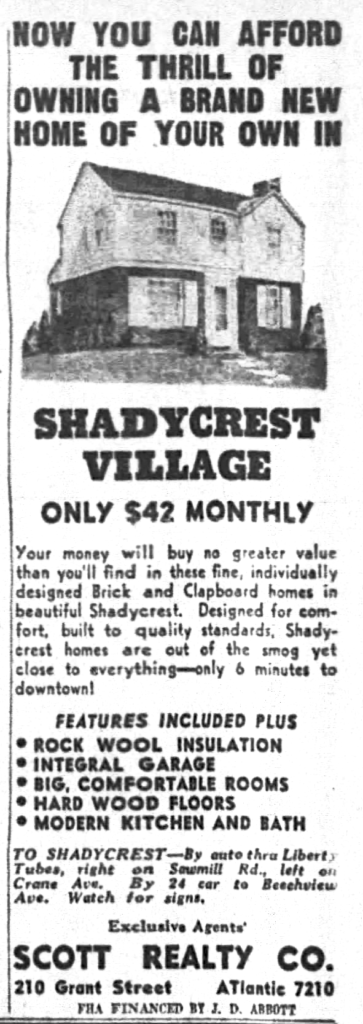

Economical though they were, the houses were up to date, according to the puffery the developers distributed to the papers.
Noteworthy features being built in Shadycrest homes include colonial balustrade stairways, which are wide and easy to climb; improved bathroom fixtures; medicine cabinets, linoleum kitchen and bathroom floors; improved steel casement windows, easy to clean from inside the house, insulted ceilings, Kastone laundry trays, tilt-up garage doors, cabinet sink sets, wallcases edged with non-corrosive metal, and electric ventilating fans.
They also had generous lots to stand on, and—since we were in the middle of the Second World War—the publicity pointed out how much space you would have for a victory garden.
Lots in this development will all be good-sized, ranging from 100 to 200 feet deep. This means that owners will have enough ground for their own victory gardens and can raise their own vegetables.

The location was a big attraction—“so near the downtown district, and above the smog level”—although “6 minutes to downtown” assumes no pauses in driving through the Tubes, which was no more likely in 1943 than it is now.

The development continued to grow, and the larger part of it was made up of five-room double houses in the same simplified Colonial style. These sold rapidly at the end of the war, as returning soldiers looked for places to settle down and raise families.

Cheap though they were, these little houses have aged well. The neighborhood is still very pleasant today, and we notice that many residents still take advantage of the generous lots that come even with the doubles to plant cheerful gardens.

If you visit a friend in Shadycrest, you may need to be very careful about your navigation. The development began on established streets like Tropical Avenue, but as it grew the developers added new winding dead-end streets, and they had to come up with names for them. So…
Shadycrest Drive
Shadycrest Road
Shadycrest Court
Shadycrest Place
Shadygrove Avenue
Shadyview Place
Finding a house in Shadycrest requires an instinct for pedantic specificity.




The little village of Rennerdale sits halfway between Carnegie and Oakdale on the Noblestown Road. This corner-tower frame church, with its Colonial-style details, reminds us of the Noblestown Methodist Episcopal Church designed by James Allison; and since we know that Allison designed other buildings in the area, it would not surprise us to find that he was responsible for this one. It has been swathed in artificial siding, as our few surviving frame churches usually are; but the siding men did an unusually good job of making sure that the windows and doors were properly framed. The church still belongs to its original congregation.



There’s still a bell in that belfry.

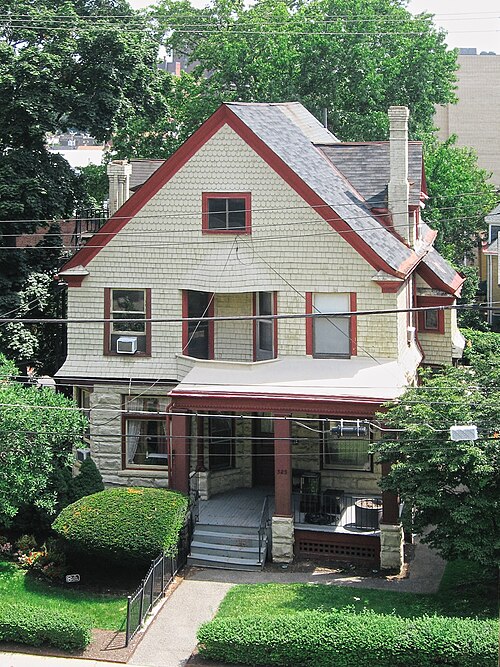
Parking garages sometimes give us good views of the surrounding buildings, and no one questions your right to be there as long as you look respectable enough. (The powdered wig helps.) Here are three interesting houses on Aiken Avenue seen from the Shadyside Hospital garage. First, an unusually well-preserved Shingle-style house with a lush crop of shingles.
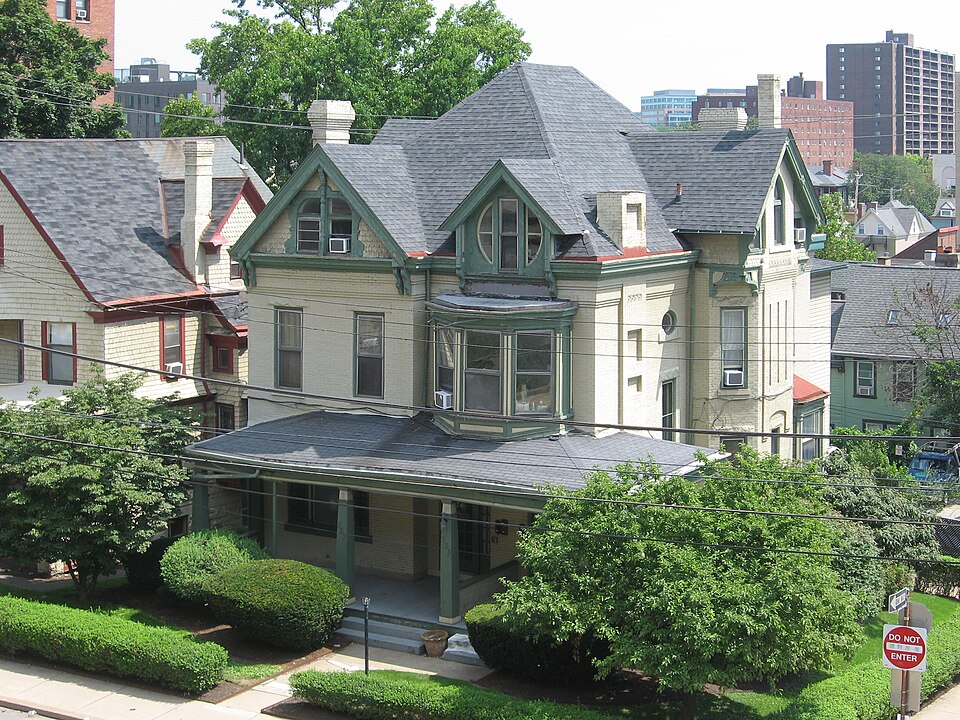
This Queen Anne house has been turned into seven apartments, to judge by counting mailboxes and doorbells.
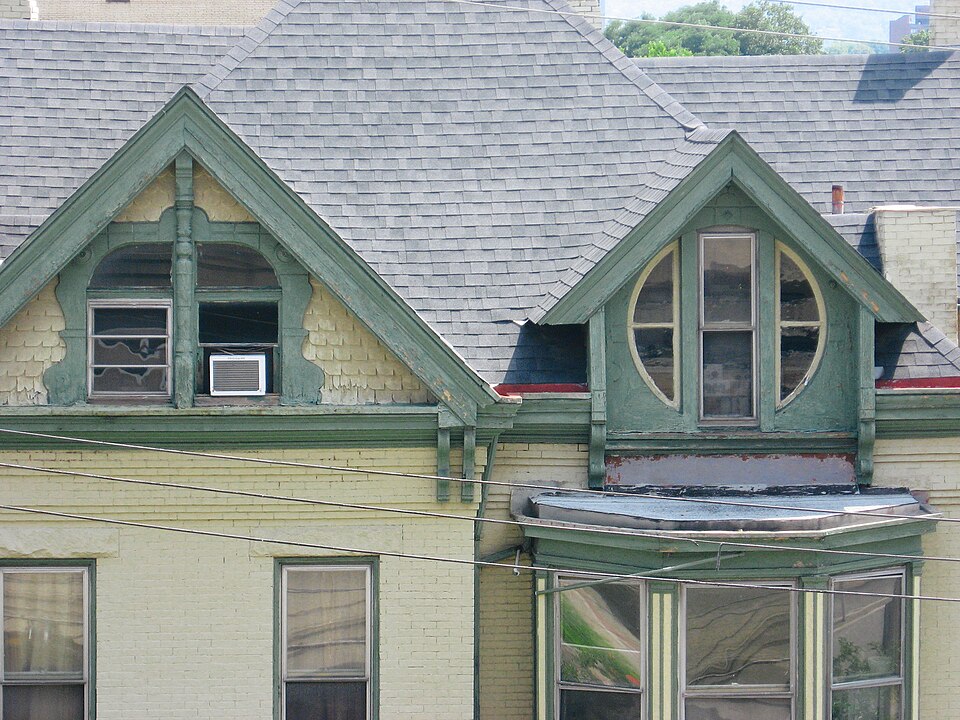
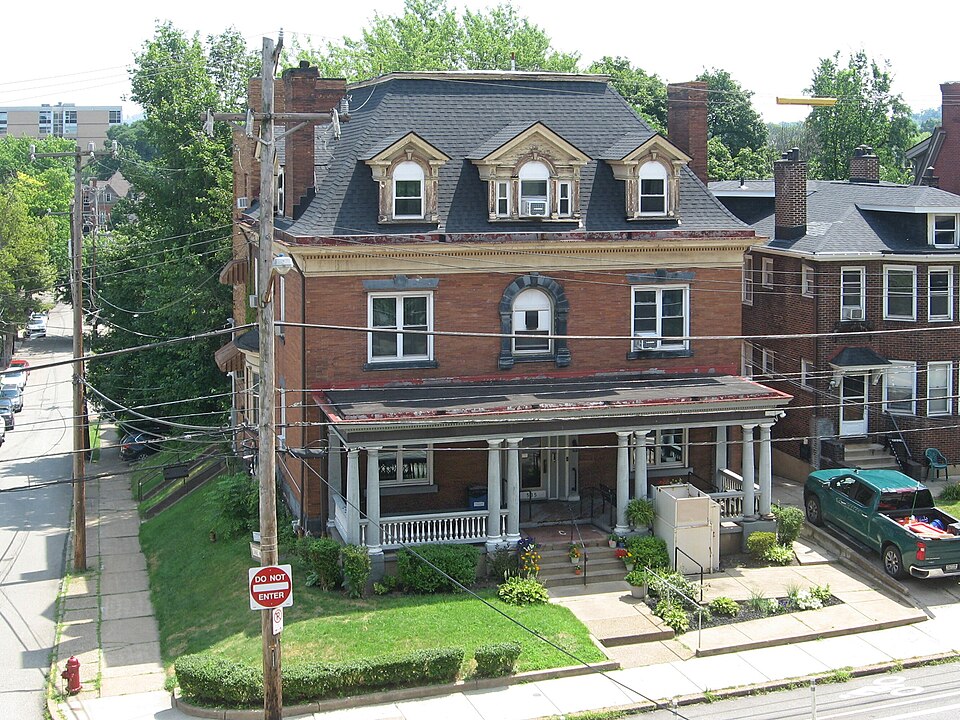
Finally, this mansion in the turn-of-the-twentieth-century interpretation of Colonial style has grown an apartment building in its back yard, a disease to which some old houses are subject in urban neighborhoods. It appears on Google Maps as a “community correction center,” so if you make a mistake in typing you can probably come here to have it corrected professionally. Old Pa Pitt prefers to make his own corrections, but he is glad there is a service for people who need it.
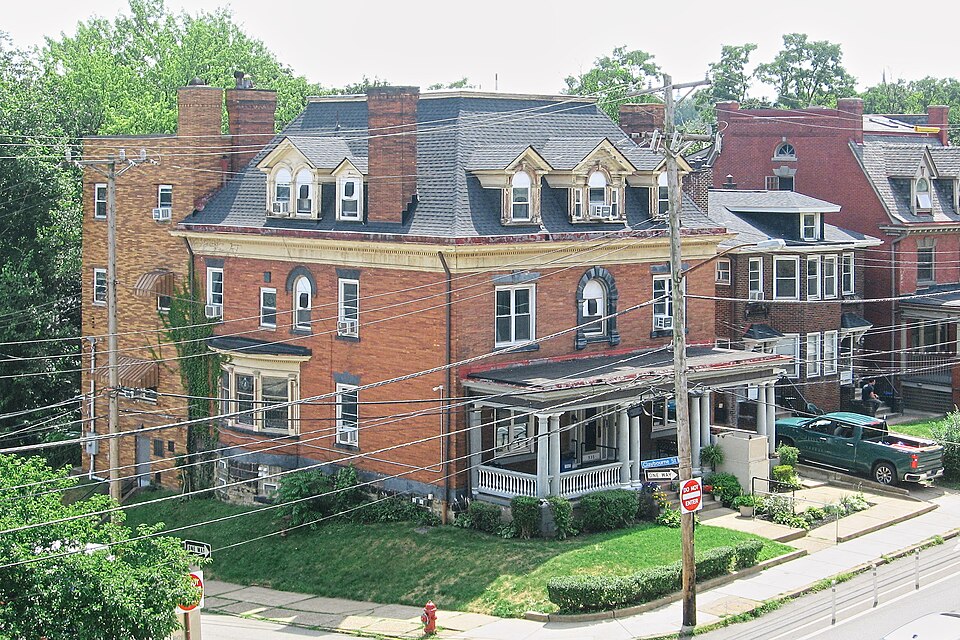

An exceptionally splendid instance of the turn-of-the-twentieth-century interpretation of Georgian architecture from the days when the Colonial Revival was beginning to gather steam.




Overbrook was one of the last boroughs to be annexed by the city of Pittsburgh. In 1929, when it was still independent, it built this fine all-in-one municipal building from a design by architect Louis Stevens, who is best remembered for houses for the rich and the upper middle class but also designed most of the public buildings for the borough of Overbrook. As far as old Pa Pitt knows, the building still belongs to the city of Pittsburgh, which has used it for various purposes over the years. It has been sensitively renovated and seems to have a secure future.

In seventeen and a half years of articles, this is the first time old Pa Pitt has published one about Overbrook. It just goes to show how much more there is to do. Even another seventeen and a half years will not come near to finishing the job, so Father Pitt will just have to keep working.

Colonial revival had passed from a fashion to a mania by the 1930s, with the restoration of Williamsburg capturing the American imagination with visions of an elegant Georgian past. Small federal buildings, especially post offices, almost always adopted the Georgian style—as we see in this modest post office with its neat Georgian entrance, complete with fanlight. The post office has moved to larger quarters, but the building is kept in original shape by its current occupants.



